Thanksgiving in America is a holiday that hearkens back to when Europeans first settled the East Coast in the early 1600s and formed relationships with Indigenous groups. The way these early relationships are represented has changed over time, but what has stayed consistent is Thanksgiving’s association with a bygone era of American history. Here at The Silent Sod, we love examining how people in the past understood and represented times even further in the past.
As this 1891 menu from the Occidental Hotel in San Francisco shows, even back then, they were invoking nostalgia for “ye olde dayes.”
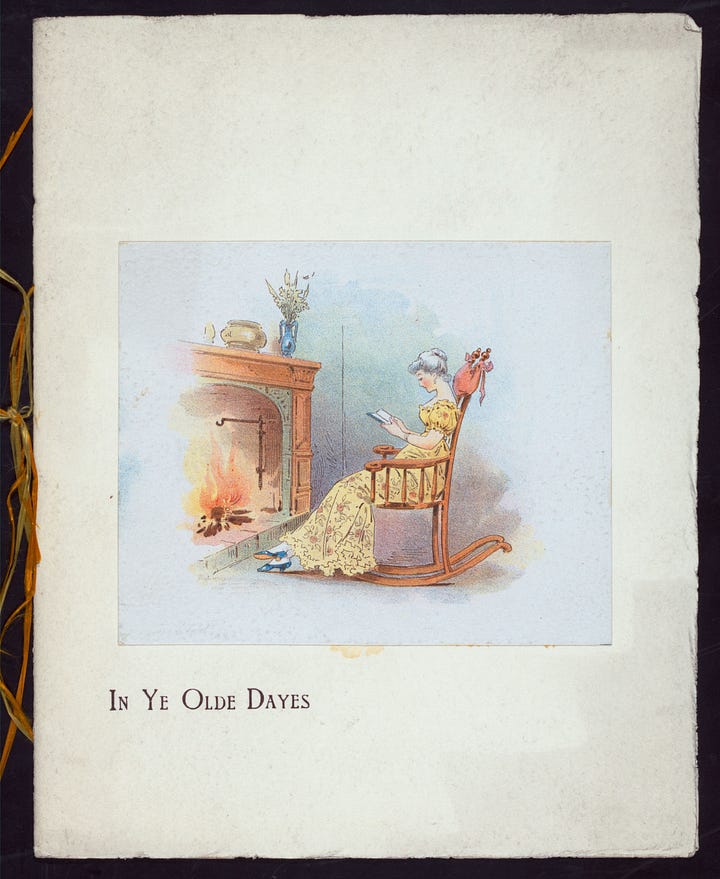

This menu is one of thousands available through the Buttolph collection of menus at The New York Public Library. This digital database began as a passion project of Miss Frank E. Buttolph (1844-1924) who made it her life’s mission to collect menus. Recently, I searched this collection for Thanksgiving menus, and ended up downloading and analyzing about seventeen of them covering the period 1891-1899 and representing a fairly wide geographic swath of the country (Altoona, PA; Boston, MA; Chattanooga, TN; Chicago, IL; Creston, IA; Detroit, MI; Nashville, TN; Portland, OR; Roanoke, VA; San Francisco, CA; St. Augustine, FL; Utica, NY; Washington D.C.; Wilkes-Barre, PA; Worcester, MA). These menus looked to mainly be from hotel restaurants. Below, I offer a few takeaways from my analysis and highlight some dishes I’d love to try.
Cool cover art
What first drew me to the menu collection was the incredible variety of cover art available through the digital database. Turkeys were commonly represented on these menus as well as flowers and young women. In the pictures below, you’ll notice that some of these menus were bound with ribbon.
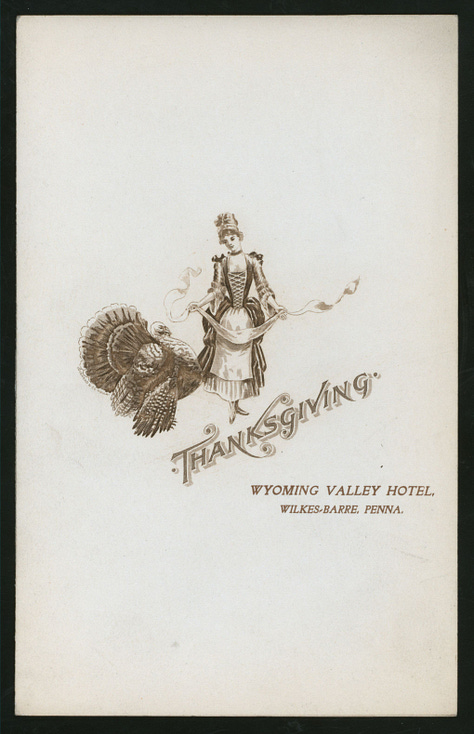
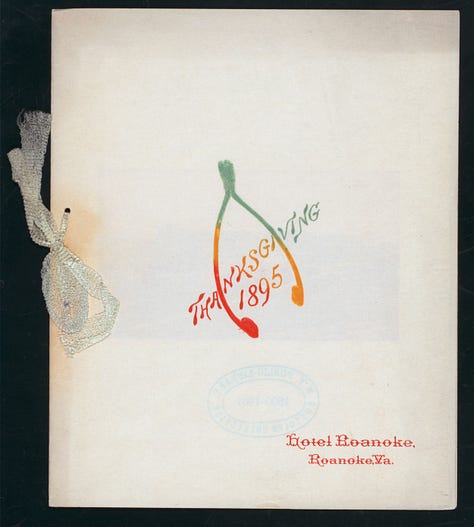
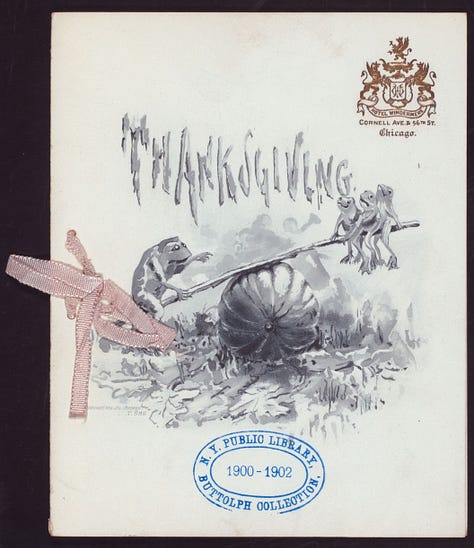
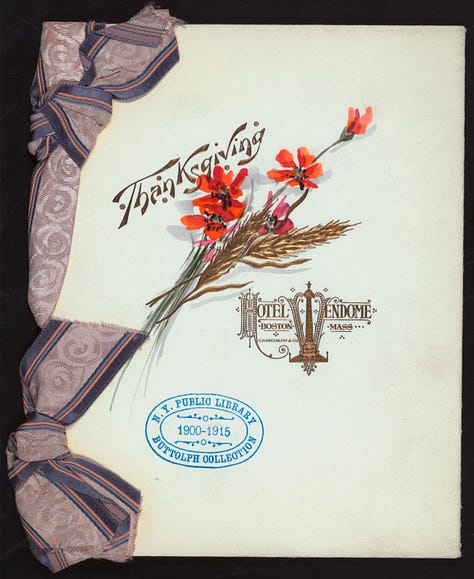
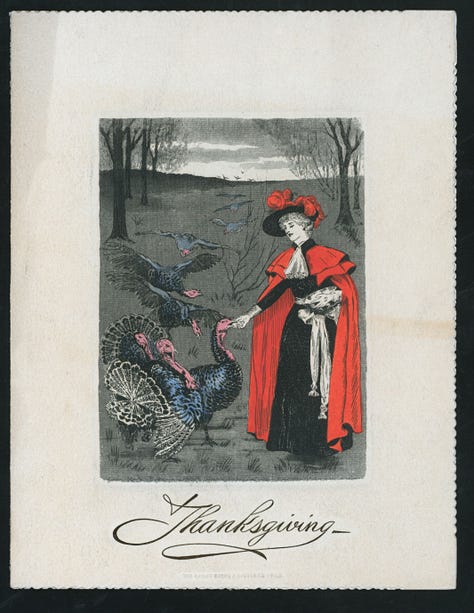
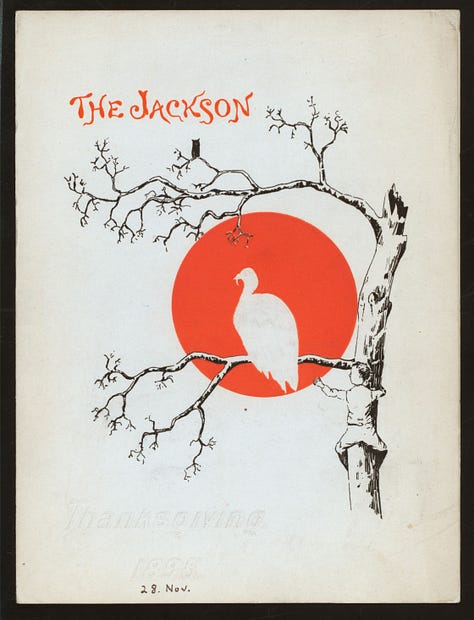
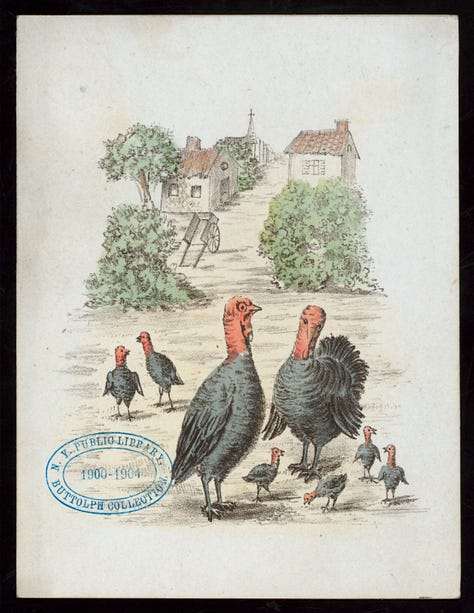
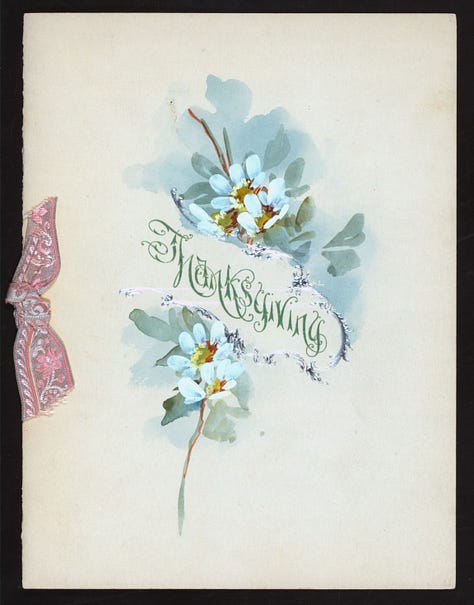
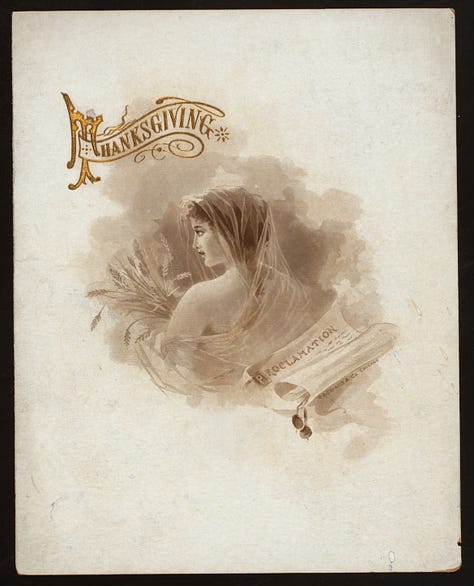
Menu Structure
Often there was an oyster course to start, and specifically Blue Point oysters. Celery was also usually listed near the top of the menu. Apparently, celery was considered a delicacy in this era, and there were even dedicated celery vases used to display celery.
Soups were also listed near the top of the menu with the most popular being green turtle soup and various kinds of consommé (Dubarry, Deslignac, d’Orleans, á la Rachel, Espagnole, venison, chicken, Oriental, Renaissance, a la Royal).
Meat dishes were generally listed in the middle of the menu (more on proteins below), and desserts were shown at the bottom (also discussed more below). Many of the menus listed a punch course, and there was a lot of variety in what was offered: Romain, Au Kirsch, Lallah Rookh, Frozen Egg Nog, Apricotine, Creme de Menthe, Chartreuse, Frozen Tom and Jerry.
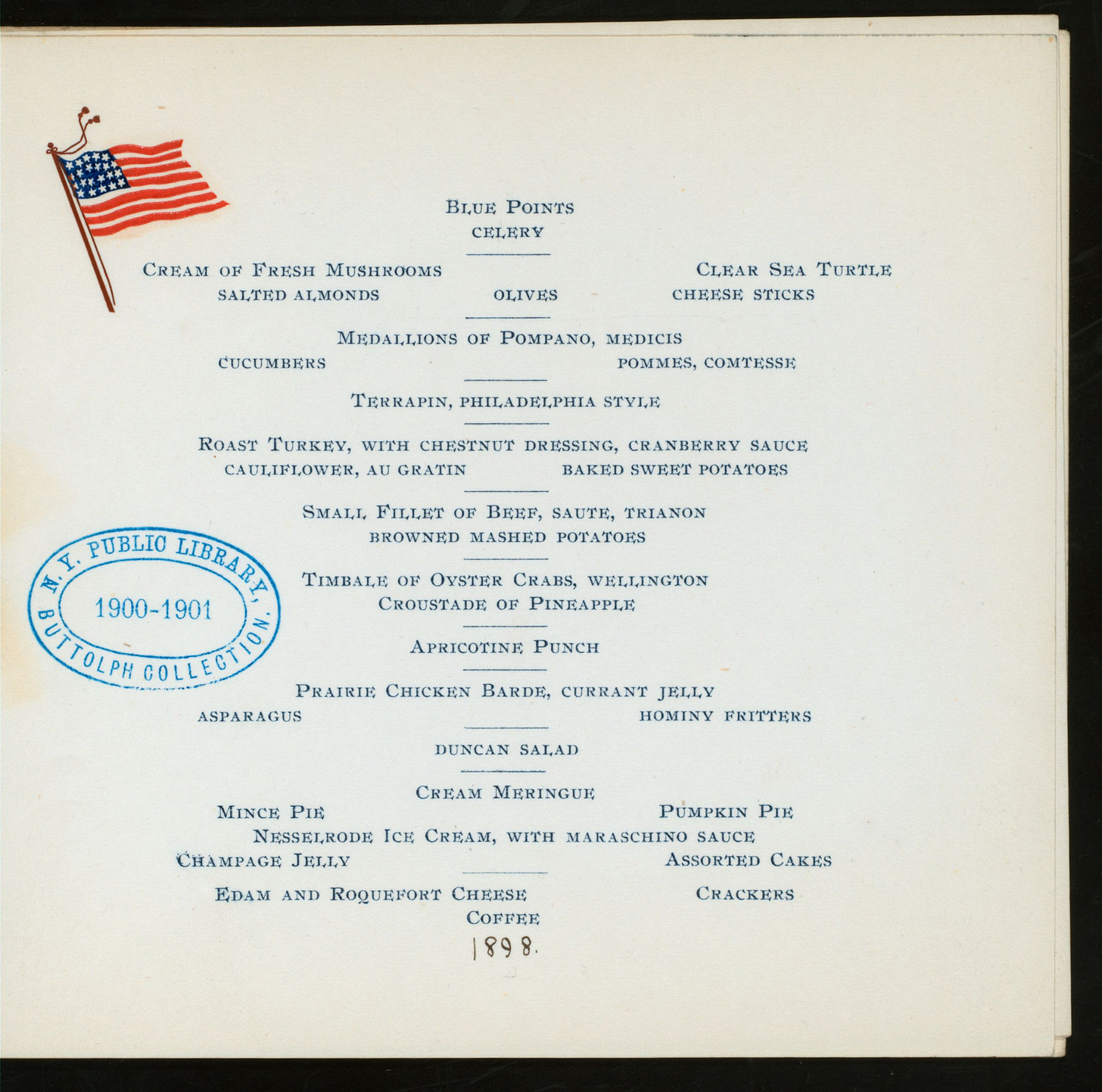
As Thanksgiving as turkey and pumpkin pie
Every menu I looked at included turkey as an option. It was often specified as being a “young” turkey and originating from Vermont. Like what I associate with a modern traditional Thanksgiving meal, cranberry sauce typically accompanied the turkey. A majority of the menus included pumpkin pie, another modern staple, but around just as often, I found mince pie or English plum pudding listed, which are not desserts I associate as readily with Thanksgiving in America.
What happened to turtles and chestnuts?
I mentioned above that many menus listed green turtle as a soup option. I also noticed a few terrapin courses (e.g., bouchés of diamondback terrapin; stewed terrapin; terrapin, Philadelphia style; cassolettes of terrapin; diamondback terrapin, Maryland style; cases of terrapin, à la Virginia). I vaguely remember seeing mock turtle soup on menus when I was younger, but back in the 1890s, they were serving the real thing. Why aren’t we eating turtles anymore? Turns out, they were over harvested and were put under protection to avoid extinction.
In addition to cranberry sauce, the turkey course was often served with chestnuts. The holiday season in American is associated with “chestnuts roasting on an open fire” thanks to The Christmas Song, but outside of holiday markets, I’ve rarely ever encountered chestnuts. Our lack of chestnuts these days can be traced to chestnut blight, which devastated chestnut tree populations in the United States in the first half of the twentieth century.
Finding out about the environmental underpinnings of the decline in turtles and chestnuts makes me wonder: is there anything on your holiday table this year that might not be in the future because of climate change?
Haunches and saddles. Are you game?
In addition to turkey as a protein option, many of the menus featured game. For instance, at The Portland in Portland, Oregon, in 1891, you could order a saddle of bear. Other exciting protein options included canvass back duck, saddle of venison, leg of mutton, green goose, haunch of antelope, green wing teal (duck), roast pheasant, filet of Canadian grouse, and roast haunch of mountain deer.
If you’re looking for the best game options, I’d suggest dining at the The Butterfield in Utica, New York, in 1896:
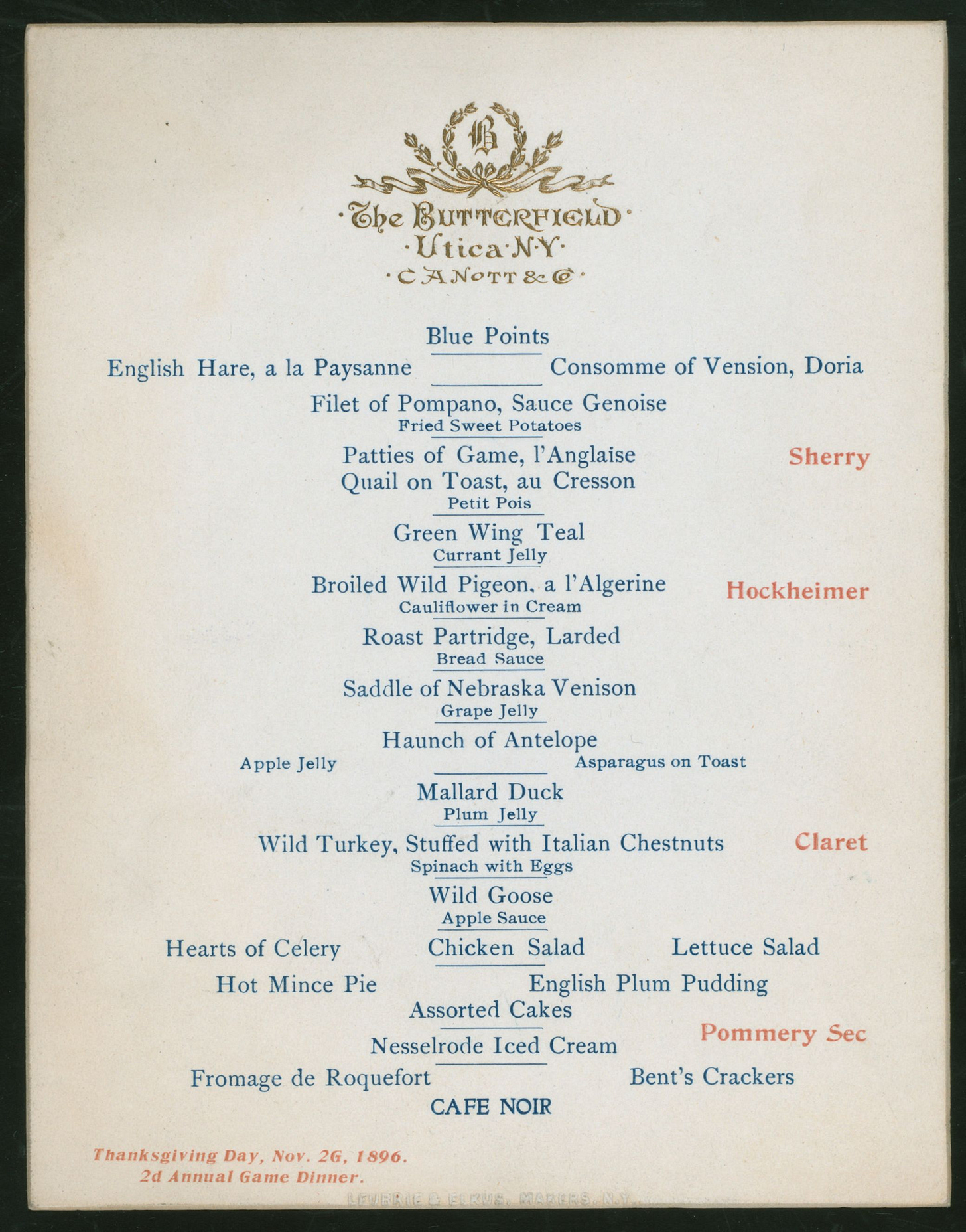
Leave room for dessert
I’ve already mentioned the three most common dessert options: English plum pudding, mince pie, and pumpkin pie. These represent just the tip of the iceberg (or ice cream?) when it comes to dessert options, though. There were cookies, cakes, jellies, macaroons, marshmallows, mousses, and meringues. Ice cream flavors included Nesselrode, Neopolitan, peach, and tutti-frutti. Many desserts I had to look up (e.g., Victoria kisses, Roman creams), and some descriptions were so vague their composition may be lost to history (fancy water ices, ice cream fantasie, mushroom kisses).
Probably the most important thing I learned is that Charlotte Russe, the women’s clothing retailer, is named after a dessert. If you’d been at The Portland in 1891, you could have enjoyed some Charlotte Russe after your saddle of bear.
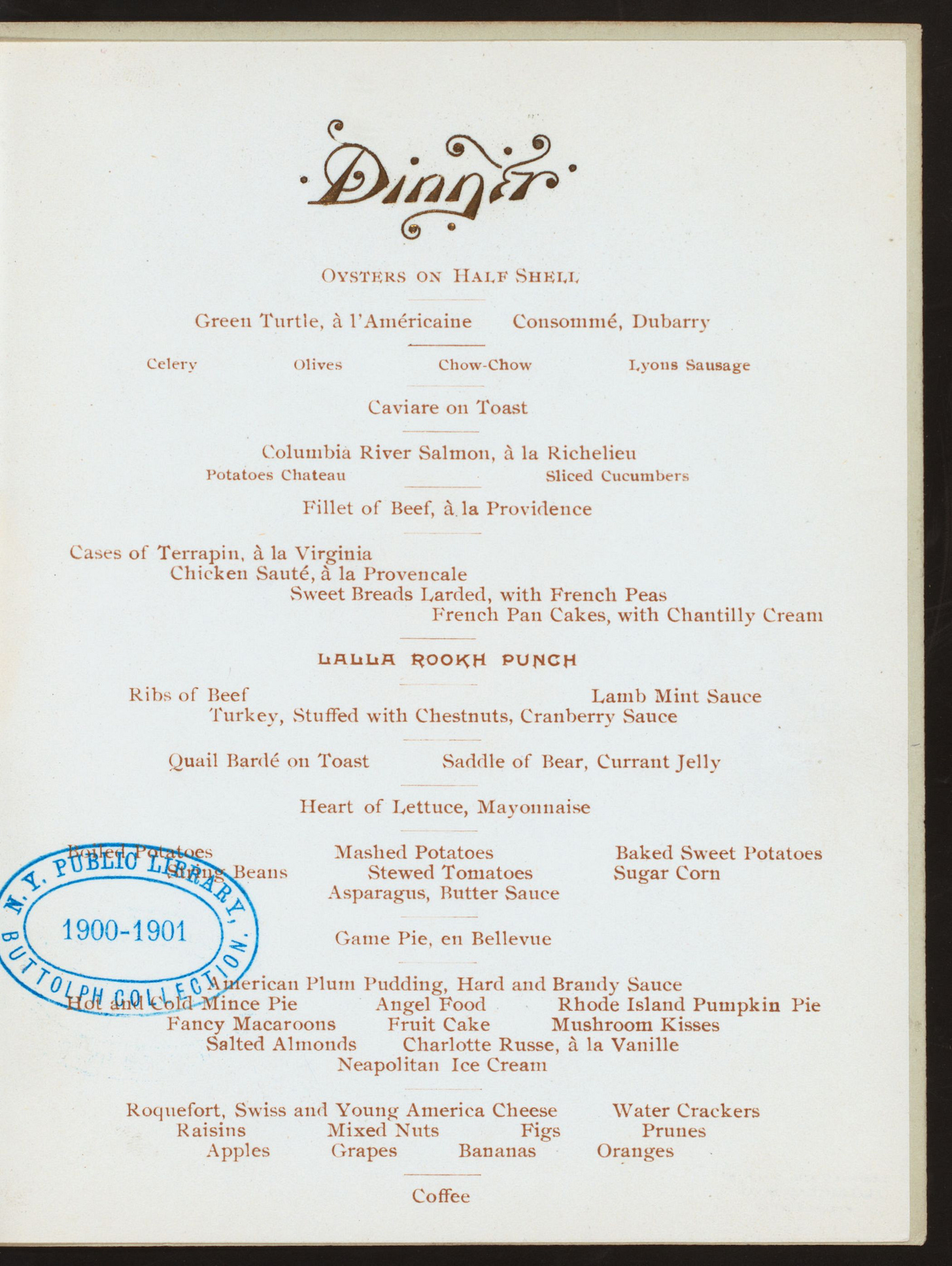
Giving thanks
I launched The Silent Sod this past year, and I’m very thankful that it’s become a collaborative project with my sister, Char. We’re both very grateful for archivists like Miss Frank E. Buttolph, who make our research possible, and for our readers, who make sharing our research rewarding. Thank you for being here!


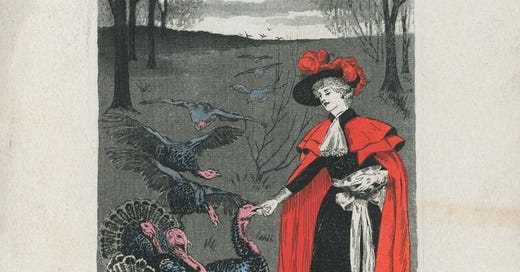


I hope one eventual change on the menu will be the removal of turkeys all together. Not many people actually like turkey. After handling this turkey last night I'm thinking about going vegetarian! Great article 👏
I find food history and trends so fascinating, so this is the perfect post for today! Somewhere, in some parallel universe, there's a version of me with a PhD in American Studies who researches and writes extensively about these things. (In this universe, I just do it as a hobby.)
Have either of you ever encountered Sylvia Lovegren's cookbook Fashionable Food: Seven Decades of Food Fads? It's really focused on the 20th century, but I think you'd still find it interesting: https://press.uchicago.edu/ucp/books/book/chicago/F/bo3534230.html